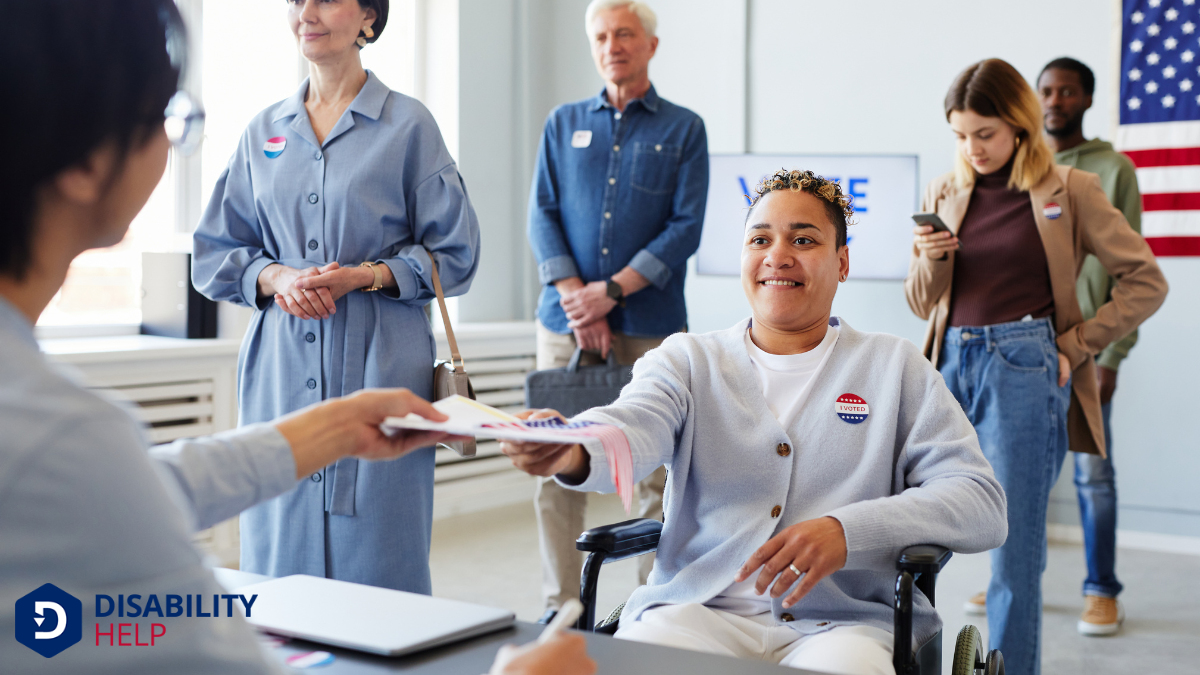We often hear about the importance of accessible votingThe provision of voting methods and facilities that allow individuals with disabilities to cast thei..., but are polling places actually required to accommodate disabled voters? Federal laws like the Americans With Disabilities Act and the Voting AccessibilityThe design of products, devices, services, or environments to be usable by people with disabilities.... for the Elderly and Handicapped Act set standards, yet implementation varies widely. It’s vital to understand how these regulations are applied and what challenges remain. Let’s explore how these laws impact the voting experience and what more needs to be done.
Key Takeaways
- Polling places must be accessible to disabled voters as mandated by the Voting Accessibility for the Elderly and Handicapped Act of 1984.
- The Americans with Disabilities Act (ADA)A U.S. law that prohibits discrimination against individuals with disabilities in all areas of publi... requires public spaces, including polling places, to be accessible.
- The Help America Vote Act of 2002 mandates at least one accessible voting machineA voting machine equipped with features like audio ballots or large text to accommodate voters with ... per polling place.
- Voting RightsThe rights of individuals, including those with disabilities, to participate in the electoral proces... Act of 1965 prohibits discriminatory practices, ensuring equal accessThe principle that all individuals, including those with disabilities, should have equal opportunity... to voting for all citizens.
- Inaccessible polling places violate federal laws designed to ensure voting rights for disabled individuals.
Understanding the Legal Framework
When we examine the legal framework surrounding polling place accessibility for disabled voters, it's crucial to understand the pivotal laws that guarantee equal voting rights. The Voting Rights Act of 1965 laid the groundwork by prohibiting discriminatory practices.
However, it wasn't until later amendments that specific attention was given to accessibility. The Voting Accessibility for the Elderly and Handicapped Act of 1984 requires polling places to be accessible to elderly and disabled voters in federal elections. This act emphasizes the importance of removing barriers, ensuring everyone can cast their vote independently.
Additionally, the Help America Vote Act of 2002 further supports this by mandating accessible voting systems. By understanding these laws, we empower ourselves and advocate for a more inclusive democratic process.
The Role of the Americans With Disabilities Act

Although the Voting Accessibility for the Elderly and Handicapped Act laid essential groundwork, the Americans with Disabilities Act (ADA) of 1990 plays a transformative role in ensuring polling places are accessible to all voters with disabilities.
The ADA mandates that public spaces, including polling locations, accommodate the needs of individuals with disabilities. Let’s break it down:
- Physical Accessibility: Ramps and handrails must be available for those with mobility challenges.
- Communication Access: Signage and information should be accessible to those with visual or hearing impairments.
- Training: Poll workers are trained to assist voters with disabilities.
- Architectural Standards: New constructions or renovations must comply with accessibility standards.
How the Help America Vote Act Impacts Accessibility
Building upon the foundational work of the ADA, the Help America Vote Act (HAVA) of 2002 further enhances the accessibility of polling places for individuals with disabilities. HAVA mandates that every polling place have at least one voting machine that’s accessible to individuals with disabilities, including those with visual impairments. This law guarantees that everyone can vote independently and privately, a key component of full participation in our democratic process.
HAVA also provides funding to states to improve voting systems and accessibility. Encouraging states to upgrade their equipment and training helps remove barriers that might otherwise disenfranchise voters with disabilities.
It's clear that HAVA plays a vital role in making certain that our electoral process is inclusive and accessible for all citizens.
Evaluating Current Accessibility Standards in Polling Places
As we evaluate the current accessibility standards in polling places, it’s essential to recognize both the progress made and the challenges that persist.
We've seen improvements, but understanding the specifics helps us appreciate the complexities involved.
Here’s a snapshot of what constitutes accessible polling locations:
- Entrance Accessibility: Does the entrance have ramps or automatic doors?
- Voting Equipment: Are there machines with audio or tactile interfaces for visually impaired voters?
- Pathway Design: Are pathways wide enough and free of obstacles for wheelchair users?
- Signage: Is there clear, large-print signage to guide voters with visual impairments?
Challenges and Progress in Implementing Accessible Voting

Addressing the complex landscape of polling place accessibility, we acknowledge the improvements made while recognizing the ongoing hurdles.
We've seen advancements like ramps, accessible voting machines, and better-trained staff. Despite these strides, challenges persist. Many polling places still lack full accessibility, leaving disabled voters facing physical barriers like narrow doorways or insufficient signage.
We must also consider the inconsistency across regions, where some areas excel in accessibility while others lag.
These disparities highlight the need for stronger enforcement of existing laws and more thorough training for election workers. By committing to these changes, we can create an inclusive voting environment.
Let's work together to guarantee every citizen, regardless of ability, can exercise their right to vote without obstacles.
Frequently Asked Questions
What Accommodations Are Available for Voters With Visual Impairments?
Let's explore how we assist voters with visual impairments. We provide braille ballots, audio voting machines, and magnifiers. Our goal is ensuring every voter can participate fully and independently. We're committed to making voting accessible for everyone.
Are There Specific Voting Machines for Disabled Voters?
We acknowledge your curiosity about voting machines for disabled voters. Yes, there are specialized machines designed for accessibility, ensuring everyone can vote independently and privately. Let's explore these options together to empower all voters equally.
How Can Disabled Voters Report Accessibility Issues at Polling Places?
Let's guarantee everyone's voice is heard. If we notice accessibility issues at polling places, we should report them to the polling staff immediately or contact local election officials. Together, we can improve accessibility for all voters.
Do Polling Places Provide Sign Language Interpreters?
We should check if polling places offer sign language interpreters as their availability can vary. Let’s reach out to local election officials to guarantee they accommodate all voters' needs, creating a more inclusive voting experience for everyone.
Can Disabled Voters Request Assistance From Election Officials on Voting Day?
We can request assistance from election officials on voting day if we have a disability. They're there to help us navigate the process, ensuring we can cast our votes independently and accessibly. Let's utilize this support.
Conclusion
In summary, we must guarantee our polling places are accessible to all voters, including those with disabilities. Federal laws like the ADA and the Help America Vote Act lay the groundwork for this inclusivity, but it's up to us to evaluate and improve current standards. While challenges remain, progress is being made. Let's continue to advocate for accessible voting, guaranteeing every voice is heard and every individual can participate in our democratic process. Together, we can make a difference.






